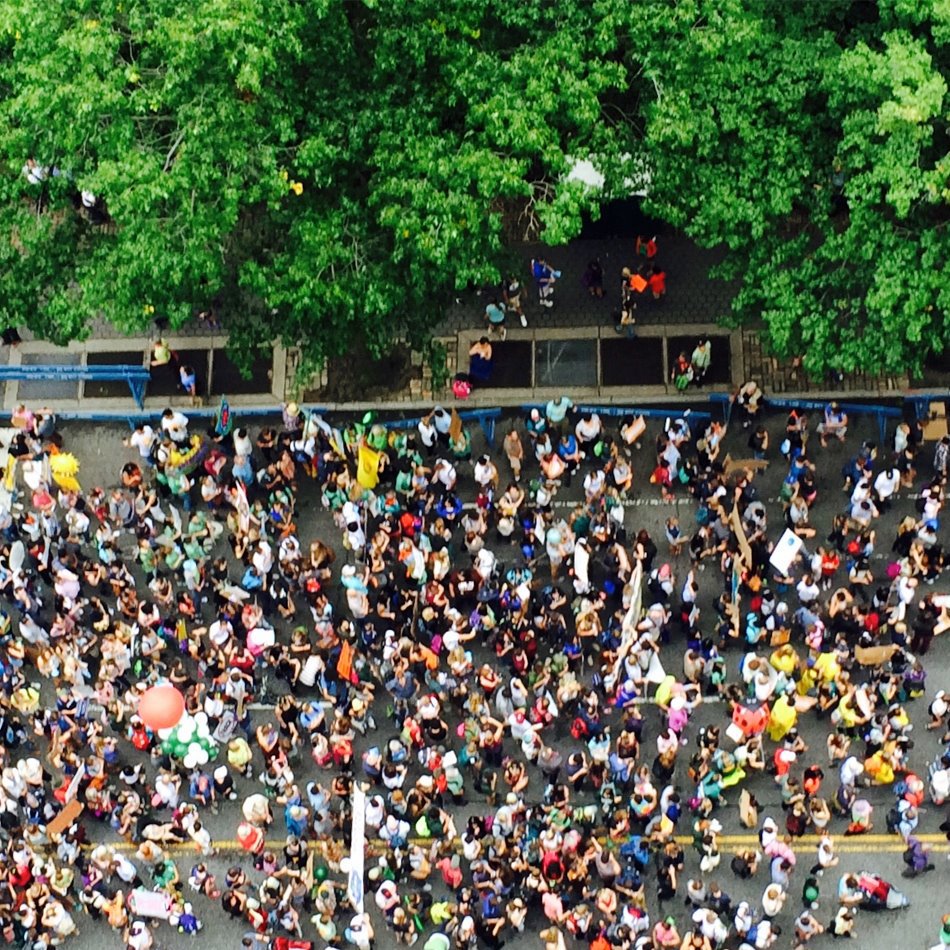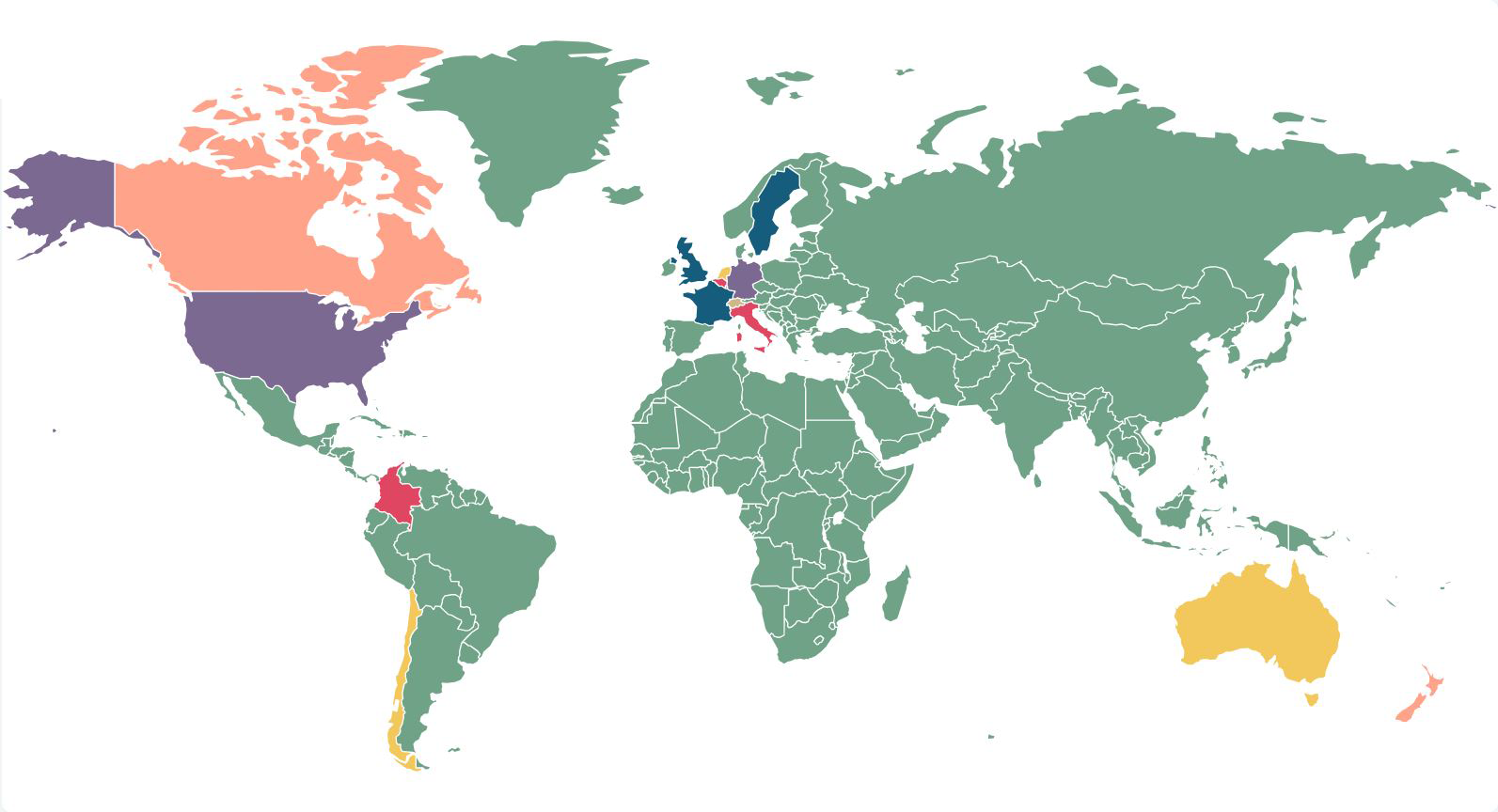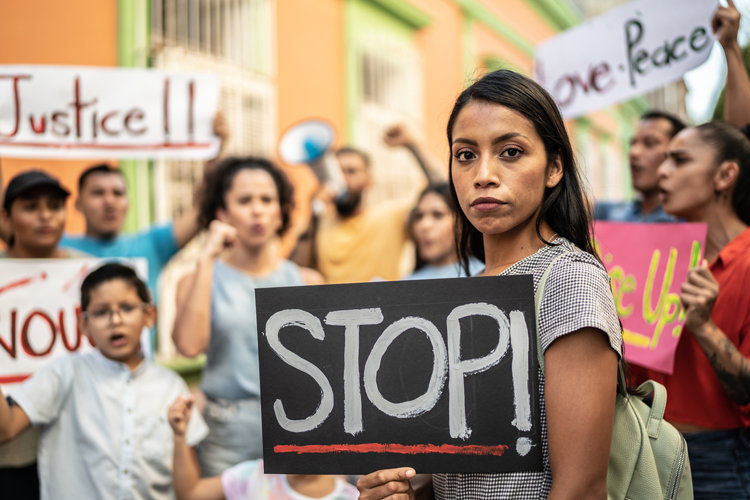Social Unrest: Resilience in Restless Times

The world is going through a period of restlessness, presenting problems for organisations looking to build resilience and insure against unrest. This is an uncertainty wrapped in political sensitivities and one that insurers may be inclined to push to one side. They shouldn’t.
This has been a year of widespread social unrest, amid the strains of a global pandemic, and hot on the heels of previous years of activism around the world.
2020’s Black Lives Matter movement, for example, has surged onto the international scene during government-imposed lockdowns against COVID-19, sparking unrest on the streets of America on a scale not seen since the civil rights movement.
Restless undercurrents were already circulating in the decade since the global financial crisis, with causes varying from climate change to gender politics, all set in a context of populist politics and increasing political polarisation.
“We haven’t seen riots or civil commotion like this in the US causing such extensive damage for a long time; there’s a wave of frustration unleashed in the country,” says Duncan Strachan, Partner at DAC Beachcroft.
Social unrest risk was already high on the register before COVID-19, and its characteristics have not changed substantially because of the pandemic, emphasises Charles Hecker, Partner at Control Risks, a specialist global risk consultancy.
“Instead, the challenges have accelerated and intensified as a result of the pandemic,” Hecker says. “The outbursts of activism, from Chile to London and Hong Kong, have had different triggers but similar underlying drivers, most notably income inequality. Those drivers are still there and the pandemic has only increased levels of inequality.”
Policy wordings
Property policies have typically included strike, riot and civil commotion (SRCC). Civil unrest associated with the Black Lives Matter protests will test such policies, particularly as a tide of hard market insurance pricing was already rising.
“I expect we will see wordings become more clearly delineated for the different types of cover and damage for civil unrest perhaps excluded or covered under a separate section or sub-limit within property policies,” says Strachan. “That would also extend to denial of access and non-damage business interruption,” adds Strachan.
Recent civil unrest elsewhere in the world has also highlighted problems of inconsistency across legal systems in classifying civil unrest and terrorism. This has led to different outcomes for physical damage insurance claims made under property all risks insurance policies, which typically exclude terrorism.
Violence against the government is classed as terrorism in English law, but it can be difficult to define when terrorism begins and ends, taking the Hong Kong protests as one example.
“Demonstrators were trying to change government policy on the controversial extradition bill, leading to violence in the streets,” says Chris Wilkes, Partner at DAC Beachcroft.
“In a typical day of protests in Hong Kong, what may start off with a few hundred people demonstrating on a political basis, therefore doing things which could constitute terrorism as it is defined in most policies, at some stage may become a ‘pure’ riot. The damage that follows would then be damage caused by riot, which is arguably not excluded under the policies.”
A similar question of drawing the line between riot and terrorism arose in Chile, where in October 2019 the announcement of increased public transport ticket prices in Santiago sparked student demonstrations that escalated into riots and a government-declared state of national emergency.
“In these events it is possible to identify a series of political and social causes with various actors involved,” says Maria Jesus Perez, Associate in DAC Beachcroft’s Chilean office.
Perez identifies different groupings within the commotion, the first of which involved peaceful demonstrations by large numbers of people. However, there were also organised criminal groups causing severe damage to public and private infrastructure, as well as opportunistic looters and anarchist groups.
“Many of the affected policies did not contemplate the definition of the concepts of the events that affected our country. Therefore, the interpretation made of them by the judge will be fundamental,” she says.
From an English or common law perspective, the Santiago violence could be defined as terrorism, and therefore excluded by SRCC policies. However, local laws take a different view, and arguably the Chilean government’s word as opposed to the strict interpretation of the facts will be final.
This poses problems for wordings in insurance that have not been designed to cope with differing national rules. Strachan says: “You have standard wordings, but there are rules in many countries, particularly emerging markets, that local policies have to be interpreted by local law.”
Civil disturbances in Vietnam in recent years, sparked by anti-China sentiment, have resulted in similar issues where unrest has combined aspects of terrorism with other forms of civil disobedience. This has applied particularly to contingent business interruption insurance for many Western companies suffering severed logistics caused by dam-age to suppliers.
“If the insurers seek to exclude something, the burden of proving the exclusion usually rests with the insurer,” says Wilkes. “However, policies often reverse the burden of proof for terrorism, so somebody wanting to make a claim has to establish that the claim they are making falls within the scope of the policy. For me, the biggest issue at the moment is what insurers do about excluding or limiting those things and how far are they prepared to go?”
While terror exclusions will remain, Wilkes worries that insurers could pull back from offering SRCC protection because of these ambiguities. “I suspect insurers will start either not providing cover for it or introducing sub-limits. I think the trend will be less cover one way or another”.
Broking sources suggest there is to date little evidence of insurers withdrawing coverage on US SRCC risks except in specific cases and some withdrawals from offering Chilean and Hong Kong coverage.
“You might get some individual loss hit accounts where they pull back or change terms and conditions, but, anecdotally speaking, carriers aren’t divesting themselves of these risks,” says Scott Bolton, Director, Crisis Management at Aon.
Strachan thinks insurers will assume a more flexible approach to wordings in response to situations such as the Santiago riots.
“Rather than sitting back and looking for protection in standard wordings, they have to work harder to understand the business they are writing and how local law will interpret it. The view is changing in the London market, with a new generation of underwriters more used to dealing with truly global business,” he says.
Many insureds are looking to keep costs down amid the COVID-19 downturn and rising insurance rates, with brokers suggesting little interest yet in new products. However, clients are looking at existing policies for risks such as business interruption (BI) and questioning why in many cases they have not functioned as they believed was intended.
Wilkes cites the example of UK insurers’ response to BI claims prompted by government lockdowns in response to the COVID-19 pandemic. “Everybody's now trying to expressly exclude something they’ve said was never covered in the first place,” he says.
Strachan stresses insurance companies should help through better communication and making more data available to clients to assist in resilience planning. “The obvious answers are making sure they have the right policies available and more effectively fitting expectations with the covers provided,” he says.
Hard to predict
The uncertainty is exacerbated as many civil unrest threats are impossible to model accurately or predict with any degree of accuracy. “Ultimately too many variables go into the genesis of these events to actively predict where they will happen next,” says Bolton.
Organisations trying to manage and ensure resilience in this changeable environment are putting greater onus on planning ahead for crisis management and business continuity risks. Using data analysis where possible, they are taking a broader look at exposures to assets, people, operations and client relationships and how these relate to each other.
“The very first thing that resilience looks like is preparedness, and there's nothing like a good crisis for everybody to understand the value of preparing in advance,” says Hecker.
Undercurrents of income equality can indicate where flashpoints are more likely to occur, particularly for sections of the economy worst hit by COVID-19.
“Where there is more unemployment, there is a greater chance of civil unrest,” says Bolton. “A significant proportion of the population has been impacted, particularly where GDP is disproportionately reliant on industries such as tourism.”
Sudden events, such as the port explosion in Beirut in August, are the type of triggers that can kindle underlying risks. Lebanon faced anti-government protests last year after a government proposal to tax WhatsApp messaging so the discontent was simmering not far beneath the surface.
The downturn after the last financial crisis and resultant unemployment was a trigger for exacerbating long-term dissatisfaction with Middle East and North African governments that contributed to the Arab Spring. Such a situation could happen to Europe’s last dictatorship in Belarus, suggests Dan Ridler, Head of Global Risk Intelligence and Data at Axco, a risk data and advisory firm working with insurers, brokers and insureds.
“There are some more obvious countries where there has been unrest before, and in places such as Belarus, where the situation has been exacerbated by terrible handling of the COVID-19 pandemic,” he says.
He worries that when companies look to make supply chains more resilient, moving them onshore in response to COVID-19, or potentially other factors such as US-China trade tensions, they create unintended consequences.
“Organisations are much more aware of supply chain risk now, but mitigating it creates new winners and losers in the global economy,” says Ridler. “Cross border trade has historically helped avert civil unrest. We’re impacting the situation as we go, creating a new set of risks out of trade arguments and a disjointed economy.”
Most civil unrest is aimed at governments, but Hecker believes activism will be focused more on companies in future, linked to recent trends towards greater corporate social responsibility.
“We anticipate companies will be confronted with questions from activists asking things like ‘What did your company do during the pandemic?’” he says. We’re seeing organisations increasingly held to account, particularly when they are seen as major global actors. Companies are going to have to have a response to questions emerging from the pandemic and the other drivers that will return.”
They will need to balance the need for sensitivity with staying apolitical when possible. “Look to the upcoming US election, for example, because it’s possible there will be civil unrest whichever candidate wins,” says Hecker.
“We've seen this when either companies act independently on their own, or as a result of social pressure, such as US retailers taking a decision to no longer offer firearms for sale. It’s important for companies to stay apolitical but also to anticipate how they can become politicised.”
Looking ahead
“While there may be many uncertain triggers on the horizon for civil unrest, not least in the wake of COVID-19, preparations can be made to promote resilience and insurers should therefore not be too quick to put social unrest on the “too hard” pile. Recent experience has well-equipped the industry with a better understanding of how to handle the exposures that may arise.







